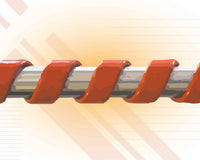Being “gone with the wind” is really not so romantic where it concerns mobile homes. Mobile home anchors and straps collectively are known as tie-downs, stabilizing systems that prevent the unit from being ripped from its foundation during weather events. Because of the lighter weight of modular homes relative to other constructions, and the fact that most simply rest on concrete piers, they’re susceptible to sliding off or tipping over when the wind picks up.
There is more than one way to anchor a mobile home, but there’s often only one right way, depending on the region you live in, the type of mobile home you’re tying down, and what you’re tying it to. How does one determine this? Let’s find out.
How wide is your mobile home?
Double-wide homes are heavier than their single-wide counterparts and require only diagonal tie-downs to prevent them from being overturned or blown off their foundation.
Single-wide mobile homes, however, are more vulnerable to being lifted up by winds passing underneath their frames — these models therefore also necessitate vertical tie-downs to counteract this force.
How old is your manufactured home?
There are two configurations of mobile home tie-down systems:
- In older homes, you’ll see a lot of over-the-top tie-downs. In this configuration, the connecting straps stretch over the roof, wrapping around the entire structure and linking it into a ground anchor on either side. Roof racks or brackets, also known as thimbles or buffers, keep the straps locked in place from the top. Care must be taken to ensure the straps don’t block doors or windows.
- In modern manufactured homes, you’re more likely to encounter frame tie-downs, which are installed underneath the unit. Here the straps tie the anchors to the steel frame rails of the floor’s home — a sturdier and sightlier arrangement by most accounts.
What wind zone does your mobile home reside in?
In 1976, the U.S. Department of Housing and Urban Development designated three “wind zones” to guide construction standards of manufactured homes according to region. Mobile homes in the more demanding wind zones of coastal areas must be tied down with more anchors. They are as follows:
Wind Zone I
Constitutes the overwhelming majority of the contiguous United States and most of Alaska. Homes in this area should be rated to withstand winds of approximately 70 mph. Single-wide mobile homes, regardless of length, will require two vertical ties per side and three 3-5 diagonal ties.
Wind Zone II
Comprises swaths of the Eastern Seaboard and Gulf Coast, where stronger winds up to 100 mph can arise. Longer single-wide mobile homes will require an additional one or two vertical ties per side and 4-7 diagonal ties (again note that the vertical tie requirement does not apply to double-wides).
Wind Zone III
Mostly the hurricane-prone areas of Southern Louisiana and Florida, as well as the Alaskan coast and all of Hawaii. Mobile homes where these fierce winds blow should be able to incur speeds of up to 110 mph. Look for a “D-sticker” indicating that the home is designed for setup within 1,500 ft of the coastline in this zone.
If you have any questions about the climate your modular home was designed for, consult the data plate located in a kitchen cabinet, bedroom closet, or near the furnace or electrical panel. It contains information about its Wind Zone rating, roof load capacity (snow), and temperature map (distribution of heat gain).
What kind of foundation are you anchoring to?
The types of mobile home anchors correspond to foundation type:
- Auger anchors are screwed into soft or hard soils
- “Deadman” or J-hook anchors are set into wet concrete, providing a firm connection as it dries.
- Drive anchors are bored into hardened concrete, brick, or block.
- Hard rock anchors, as you may guess, insert into hardened rock foundations.
Mobile home anchor installation considerations
If you’re installing tie-downs yourself, ensure even grade and insert the proper number of anchors at the manufacturer’s prescribed depth (always below the frostline) and angle, taking care to avoid buried utility lines and limit exposure to sprinklers and fertilizers that could rust or corrode them. While you’re at it, check your floor, roof, and siding for gaps or leaks — water damage can compromise your home as readily as wind can!
Where you spy a problem, Star Mobile Home Supply will spot you a solution, with quality products to cover your every weatherproofing need.
Always check with your local inspector. Everyone has different specs depending on where you are located.






